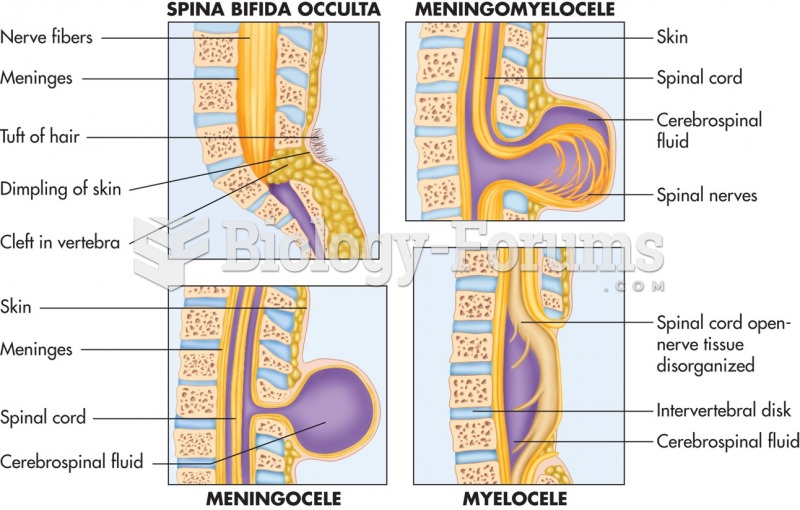Answer to Question 1
ANS: A
Chiari malformations are brainstem malformations. There are three types of Chiari malfunction. Chiari type I is most often associated with occipital headaches and generally seen in the adult population but can be diagnosed at any age. Type I symptoms may be very vague and transient, and it is often misdiagnosed as another neurological disease. Type II is generally diagnosed in infants or children and is associated with myelomeningocele or other open neural tube defects or in adults with undiagnosed spina bifida occulta or tethered cord. Type III malformation is rare, diagnosed in infants, associated with cervical myelomeningocele or pseudomeningocele, and carries a very poor prognosis.
Answer to Question 2
ANS: D
Rationale: Box 15.1 Mental Status Components
OrientationThe patient should normally be aware of person, date, and place. Ask the patient his or her full name, current date, and place in which the examination is being done.
MemoryRecent and remote memory should normally be intact. Ask what the patient had for lunch yesterday (recent) and where he or she graduated from elementary school (remote).
Fund of knowledge (take into consideration the patient's level of education)Ask about any recent news events or significant upcoming or past holiday.
Attention spanAbility to focus on the interviewer without being easily distracted. Ask the patient to repeat a short list of numbers (e.g., 7-8-9-3-0-2). Inability to repeat six or more numbers indicates attention deficit.
ConcentrationAbilit y to concentrate on a question or task. Ask the patient to remember three unrelated words (red, happy, and five) and then to repeat them in 5 minutes, or ask the patient to count backward from 100 by 7.
LanguageUse and understanding of language. Ask the patient to write a full sentence or to spell world backward. Distinguish between dysphonias and dysarthrias, as these indicate mechanical disturbances often due to CN dysfunction. Assess fluency of speech by asking the patient to repeat no ifs, ands, or buts about it. Dysfluent speech is Broca's aphasia. Speech that is devoid of content indicates Wernicke's aphasia.
Abstract thoughtsAsk the patient to interpret a common proverb (e.g., a stitch in time saves nine), or ask the patient to answer an abstract question (e.g., Is my sister's brother a man or a woman?).







